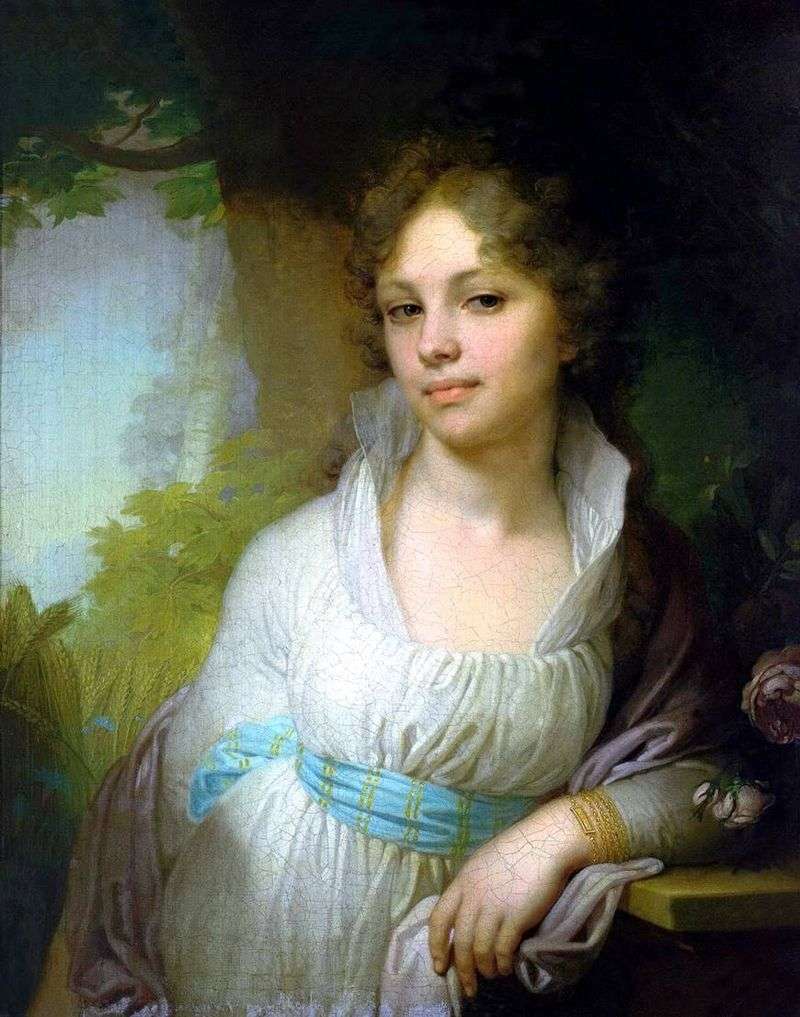
Portrait of MI Lopukhina is often called the most poetic creation of VL Borovikovsky. Perhaps, perhaps, even evaluate it as the highest achievement of sentimentalism in Russian painting. The cult of naturalness, tender feelings, desire to merge with nature inherent in this direction is expressed here with particular completeness. In the portrait, everything is in harmony, in harmony with each other: a shady corner of the park, cornflowers among the ripe rye ears, withering roses, a laid-back pose of a young woman, a simple dress freely fitting her mill, and, of course, a charming face full of amazing charm.
In the morning freshness of the skin, in the languid look, in a dreamy smile, even in some irregularity, the features of Lopukhina are genuine beauty, the beauty of the soul and lyric, inherent in Russian women. Equally emotional and transparent is the picturesque technique of Borovikovsky. The brush easily touches the canvas, enveloping everything with an air haze, thin fluid layers of paint, nevertheless, with a large plasticity form the volume, the distribution of colors passing in one another obeys the elegiac musical rhythm. Acquired by PM Tretyakov between 1885-1890 years. The history of Russian art knows works that are, as it were, turning landmarks in the development of our portrait painting. Among these landmark works belongs a portrait of MI Lopukhina, written by Borovikovsky in 1797.
Just as the masters of the ceremonial portrait surrounded their characters with attributes indicative of their rank and social significance, Borovikovsky surrounded Lopukhin with images of objects that helped to reveal her image. Such a coincidence in the reception should not surprise us: in fact Borovikovsky himself was an outstanding master of the representative portrait. But in this case, in the portrait of Lopukhina, “circumlocutions” are called upon to play a completely new role, not so characteristic of them-to reveal not the social significance and social position of the person portrayed, but the profoundly intimate aspects of his character. Surrounding the figure of Lopukhina is the landscape, and the main theme of the portrait is the fusion of man with nature. For the aesthetics of the late 18th century this theme is especially characteristic.
However, in its solution there is still much conventional – the rural nature, depicted by Borovikovsky, is perceived as a decorative manor park. But how not to note that the attention of the artist almost for the first time in Russian art is attracted here typical features of the national Russian landscape – white trunks of birches, cornflowers, golden ears of rye. The national type is underlined in the person of Lopukhina. Borovikovsky approaches in this portrait to the figurative embodiment of the Russian ideal of female beauty, as it was formed at the end of the 18th century under the influence of the ideas of sentimentalism. Lopukhina is dressed in a simple white dress with straight folds, resembling an antique tunic. The modesty of her outfit, as it were, resists the decorative splendor of ceremonial portraits.
A shawl was thrown on Lopukhin’s shoulders. The slope of the figure is rhythmically repeated in the lines of the landscape; By this method the artist again emphasizes the idea of the unity of nature and man. Lyrical mood of the portrait is expressed in its color, light and airy, built on the muffled sound of white, lilac, silvery and soft green tones, permeated with bluish reflections. However, no matter how high the picturesque qualities of the portrait, no matter how new and characteristic for his era, his design, Borovikovsky’s work could not retain to this day the power of his artistic influence, if the image itself was not marked by features of deep and true vitality. Borovikovsky not only created here a type that is characteristic of Russian culture of the 1790s and is fanned with poetic femininity,
The artist’s thought penetrates into the very depths of the spiritual world of his heroine. It is impossible not to quote here the poem which the poet Ya. Polonsky devoted to this portrait: She has long since passed, and there are no those eyes. And that smile does not exist that silently expressed Suffering is a shadow of love, and thoughts are a shadow of sadness. But the beauty of her Borovikovsky saved. So part of her soul has not flown away from us, And this look and this beauty of the body will be attracted to her. Teaching him to love, suffer, forgive, remain silent. In the portrait of Lopukhin Borovikovsky he succeeded in what his literary contemporaries did not achieve – neither Karamzin in his Poor Liza nor the poets of the Karamzin circle: Borovikovsky found artistic means for a truthful expression of the emotional life of a person.
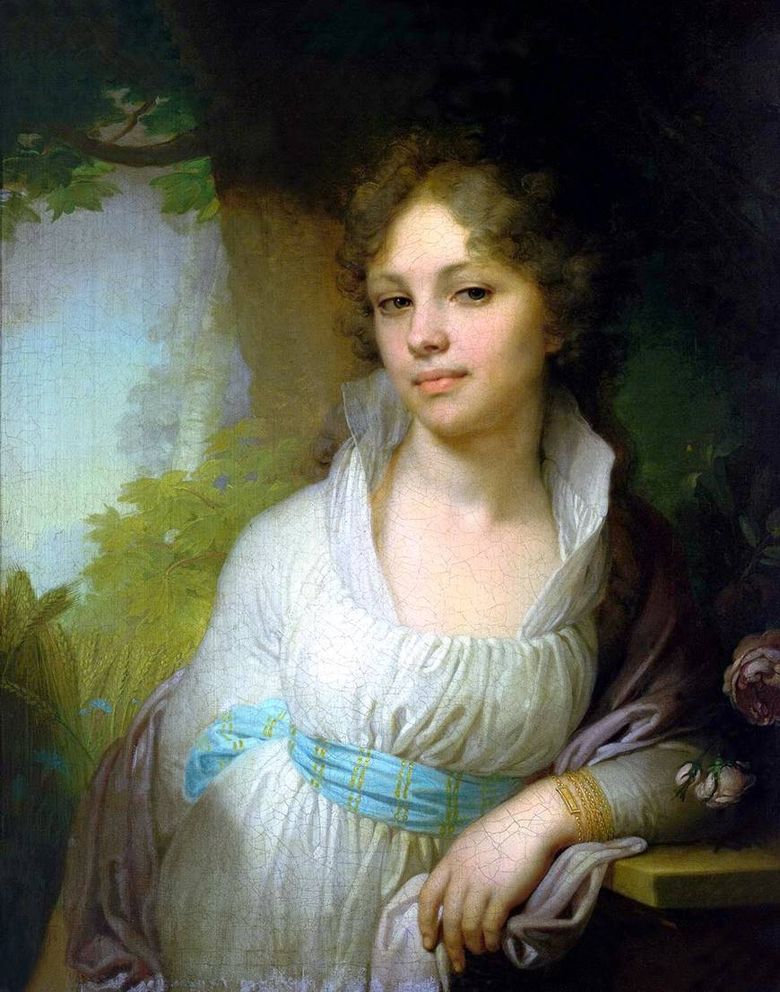 Portrait de Maria Ivanovna Lopukhina – Vladimir Lukich Borovikovsky
Portrait de Maria Ivanovna Lopukhina – Vladimir Lukich Borovikovsky Retrato de Maria Ivanovna Lopukhina – Vladimir Lukich Borovikovsky
Retrato de Maria Ivanovna Lopukhina – Vladimir Lukich Borovikovsky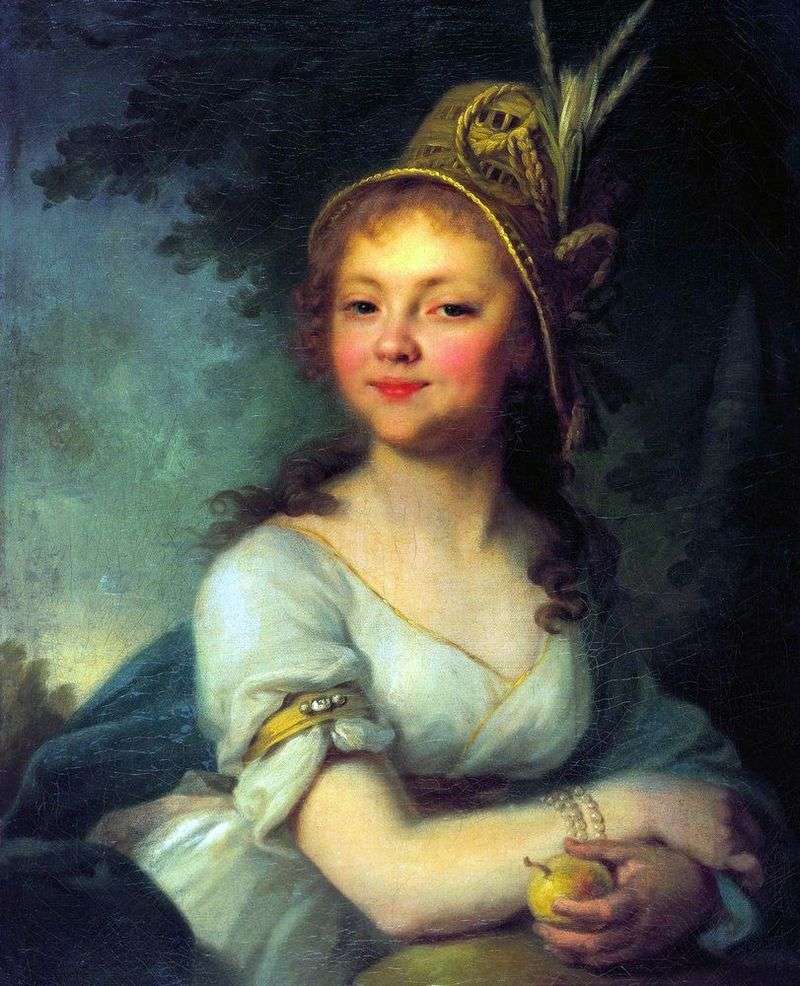 Portrait of E. N. Arsenieva by Vladimir Borovikovsky
Portrait of E. N. Arsenieva by Vladimir Borovikovsky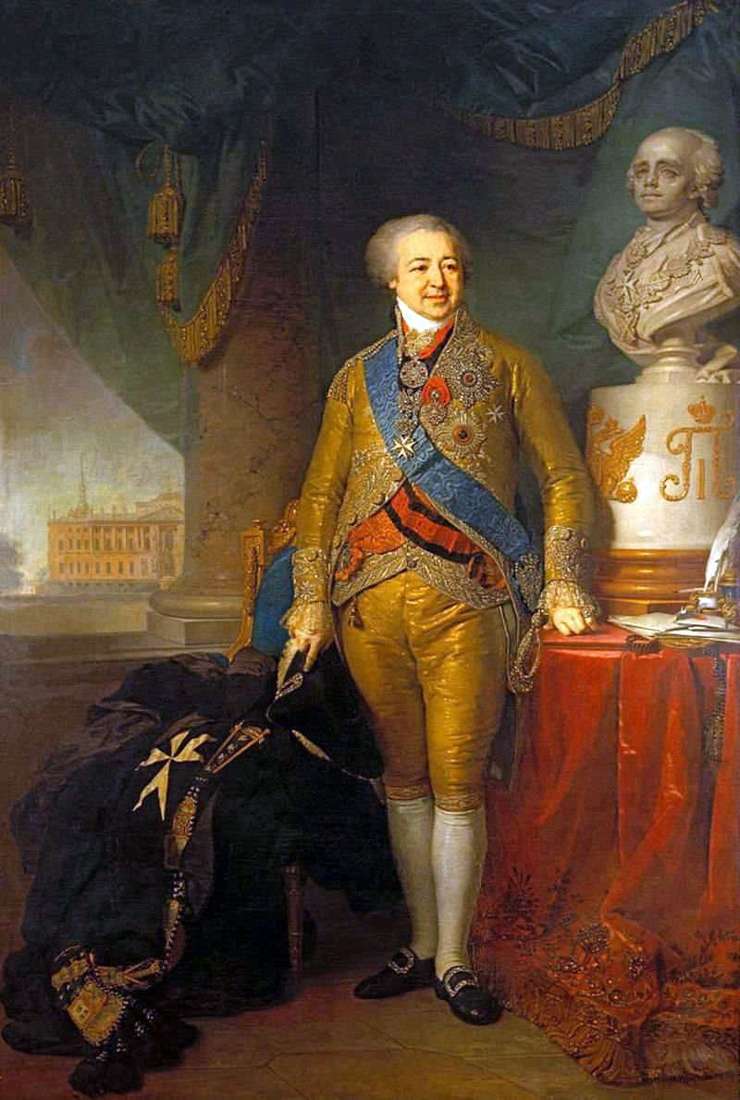 Portrait of Prince Alexander Borisovich Kurakin by Vladimir Borovikovsky
Portrait of Prince Alexander Borisovich Kurakin by Vladimir Borovikovsky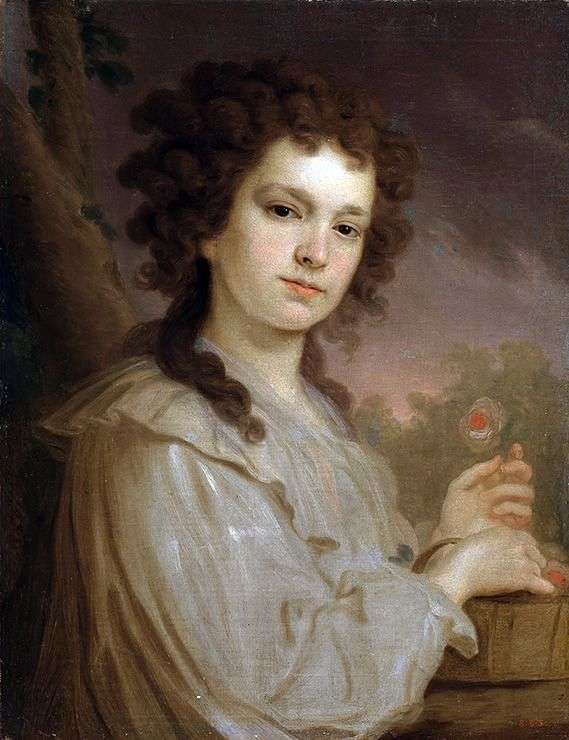 Portrait of OK Filippova by Vladimir Borovikovsky
Portrait of OK Filippova by Vladimir Borovikovsky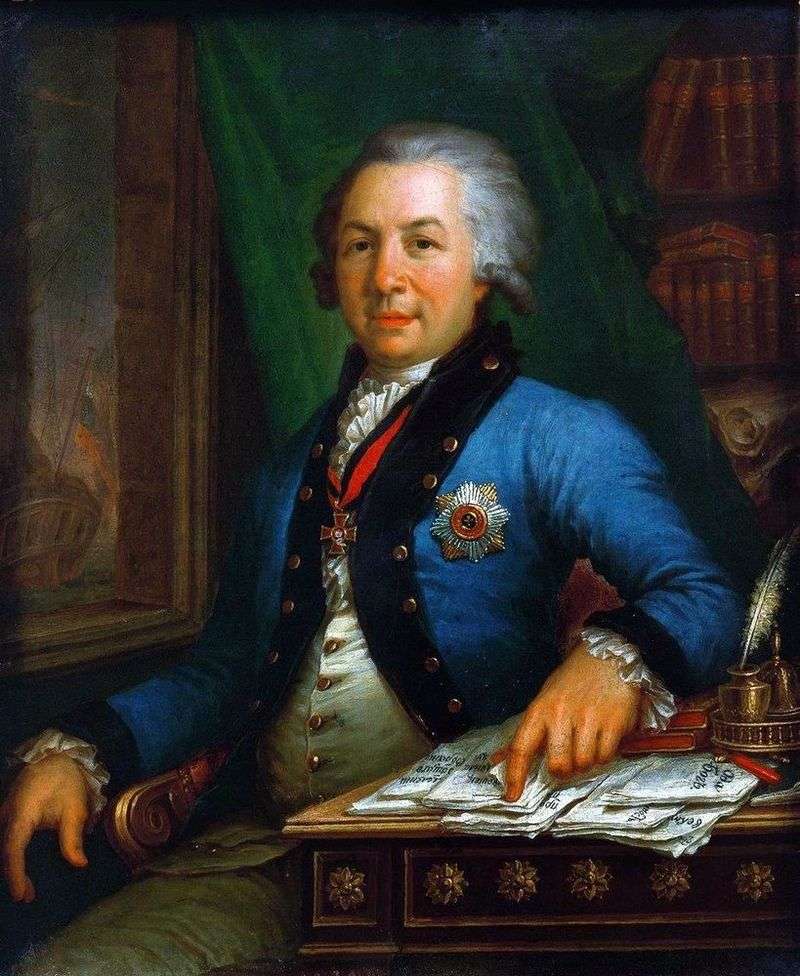 Portrait of the poet GR Derzhavin-1795 by Vladimir Borovikovsky
Portrait of the poet GR Derzhavin-1795 by Vladimir Borovikovsky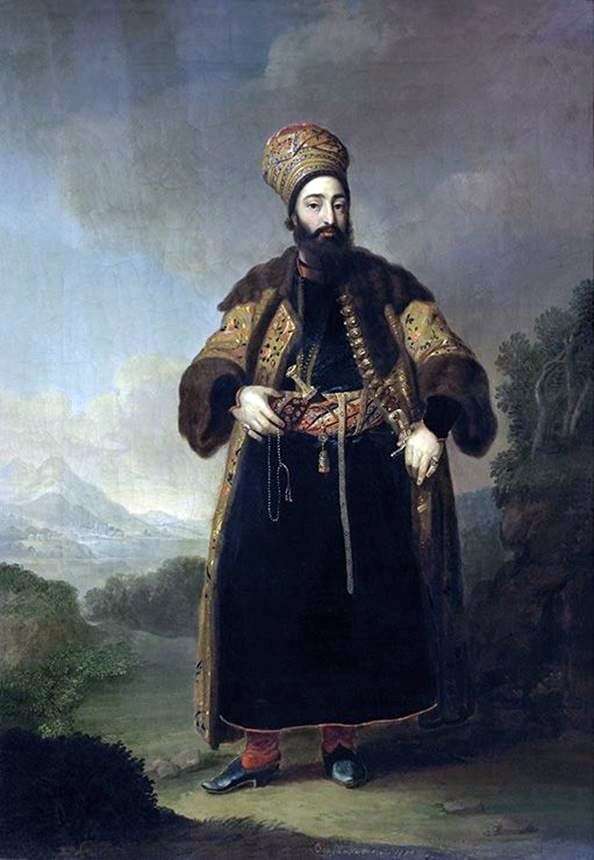 Portrait of Murtaza-Kuli-Khan by Vladimir Borovikovsky
Portrait of Murtaza-Kuli-Khan by Vladimir Borovikovsky Portrait of the Gagarin sisters by Vladimir Borovikovsky
Portrait of the Gagarin sisters by Vladimir Borovikovsky